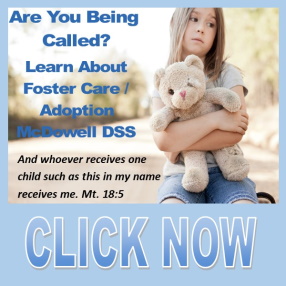Easter: We Are Living Words.
By Marlene Houk
Burke County
“In the beginning was the Word, and the Word was with God, and the Word was God.” John 1:1
He trotted onto the field, his football pants freshly whitened. A red and white helmet protected his head and calmed my mother’s heart. Crisp breezes carried the mix of buttered popcorn and freshly-cut grass as air hummed with tension among 69 high schoolers standing at attention on the sidelines. My seat on the cold cement bleachers towered above him and too far away for me to tell which player was my linebacker. I would always find him though, his 200-pound bulk, the way his hands hung down like bear paws, white socks pulled up just so, and the way he walked. These benchmarks tackled my attention every time.
In his later teens, his grandma called one day, and Adam answered the phone. When he passed the phone to me, and later during our conversation, she asked, “Who is that man at your house?” Since my husband worked full-time during the day, she was confused. I quickly assured her that the deep base voice belonged to her 16-year-old grandson!
His body language, rich baritone, and that sneaky grin while joking adds depth and laughter to my memories three decades later, enriching his words. What I enjoyed daily (nonverbal cues), an entire profession of scientists and researchers have studied for years.
David Matsumoto, Ph.D. is a professor of psychology and director of the Culture and Emotion Research Laboratory at San Francisco State University. As a renowned expert in the field of nonverbal behavior, emotion, and culture, he talks about why nonverbal communication is so important in everything from police investigations to intercultural exchanges. He said in a tweet recently, “The face is the most representative channel of nonverbal behaviors, and it is the channel most studied by scientists.”
Emily Cosgrove of Conversation Space, who empower leaders and improve conversation, says, “When communicating with another person face to face, we have the best hope of all of truly communicating our message, because we have all three elements of communication at hand: words, body language, and tone of voice.”
Jesus revealed His message perfectly and powerfully while on earth, embodying the best use of present and future scientific research in communication. His words, body language, and tone of voice enlarged the meaning of His purpose in coming to earth—eternal life and living hope. Through His death on the cross and His resurrection, He created the breathtaking possibilities that we call Easter. But when He ascended back to heaven, we were bereft of His physical body and could no longer hear the tone of His voice, the pitch or timbre of His speech, or the cadences of His culture.
However, Jesus showed us a door of truth in His leaving. In His physical absence, we, His disciples, become the other two parts of communication. We are the body language and tone of voice as we share the knowledge of Christ in a dark and hopeless world.
Jesus exampled our nonverbal role as His ambassadors. As we speak His words, our nonverbal cues create the remaining critical parts of communication that Ms. Cosgrove mentions in her article.
Nonverbally, we extend our hands to others, smoothing the Balm of Gilead (Jeremiah 8:22) on their soul wounds as we simply sit and grieve with them. We smile, hug, and face them with a posture of intense empathy, listening carefully. We walk into their isolation, opening the door wide to Sonshine. We may even sing or hum in gentle reminders of the power of godly music to lighten burdens. Jesus invites us to add nonverbal communication as we proclaim the Word of John 1:1.
He tells us that faith without works doesn’t mean anything to people without hope and light. (See James 2:26.) When we provide shelter, clothing, food, and prison visits, we show our love for Christ by helping others. (See Matthew 25:40.) Tabitha shows us a shining example of her faith as she labored diligently for her community of folks in need. (See Acts 9:36.) God’s Word overflows with stories, instruction, and ways to proclaim Christ’s message nonverbally.
As we go throughout the day, let’s remember that Christ beckons us to help Him communicate His message with our nonverbal abilities and skills.
Like my son, with non-verbal cues that shouted his parentage, may our body language and tone of voice live out that we are born of God.
For further discussion and a walk through open doors of truth, sign up for my email newsletter at http://eepurl.com/dwldpv or discover my website: https://www.MarleneHouk.com
________________________________________________________________________________
Marlene is an author and teacher of Bible studies. She may be reached at Bible167@gmail.com
To receive helpful insight from the Bible, sign up for her newsletter at http://www.MarleneHouk.com, or connect with her on other social media. You can read more good Christian News from Marlene HERE.
________________________________________________________________________________







